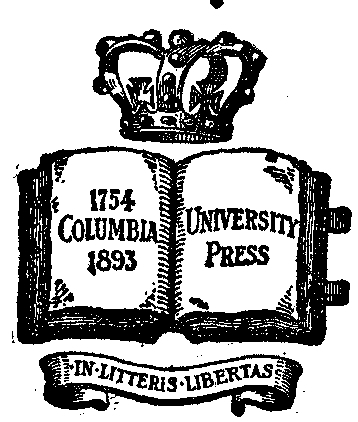Transcriber's Notes
Minor spelling inconsistencies have been silently corrected. Apart froma few corrections listed at the end of the book and indicated by scrolling the mouse over, original spelling wasretained. Footnotes were sequentially numbered and placed at the end ofeach chapter.
A HISTORY OF LITERARY CRITICISM IN THE RENAISSANCE
Columbia University
STUDIES IN LITERATURE
Columbia University
STUDIES IN LITERATURE
A HISTORY OF LITERARY CRITICISM IN THE RENAISSANCE: With Special Reference to the Influence of Italy in the Formation and Development of Modern Classicism. By Joel Elias Spingarn.
In Press:
ROMANCES OF ROGUERY: An Episode in the Development of the Modern Novel, Part I. The Picaresque Novel in Spain. By Frank Wadleigh Chandler.
SPANISH LITERATURE IN ENGLAND UNDER THE TUDORS.By John Garrett Underhill.
***Other numbers of this series will be issued fromtime to time, containing the results of literary research,or criticism by the students or officers ofColumbia University, or others associated with themin study, under the authorization of the Department of Literature, George Edward Woodberry andBrander Matthews, Professors.
A HISTORY
OF
LITERARY CRITICISM
IN THE RENAISSANCE
WITH SPECIAL REFERENCE TO THE INFLUENCE OF
ITALY IN THE FORMATION AND DEVELOPMENT
OF MODERN CLASSICISM
BY
JOEL ELIAS SPINGARN

New York
PUBLISHED FOR THE COLUMBIA UNIVERSITY PRESS BY
THE MACMILLAN COMPANY
LONDON: MACMILLAN & CO., Ltd.
1899
All rights reserved
Copyright, 1899,
By THE MACMILLAN COMPANY.
Norwood Press
J. S. Cushing & Co.—Berwick & Smith
Norwood Mass. U.S.A.
-v-
PREFACE
This essay undertakes to treat the history ofliterary criticism in the Renaissance. The threesections into which the essay is divided are devoted,respectively, to Italian criticism from Danteto Tasso, to French criticism from Du Bellay toBoileau, and to English criticism from Ascham toMilton; but the critical activity of the sixteenthcentury has been the main theme, and the earlieror later literature has received treatment only inso far as it serves to explain the causes or consequencesof the critical development of this centralperiod. It was at this epoch that modern criticismbegan, and that the ancient ideals of art seemedonce more to sway the minds of men; so thatthe history of sixteenth-century criticism must ofnecessity include a study of the beginnings ofcri